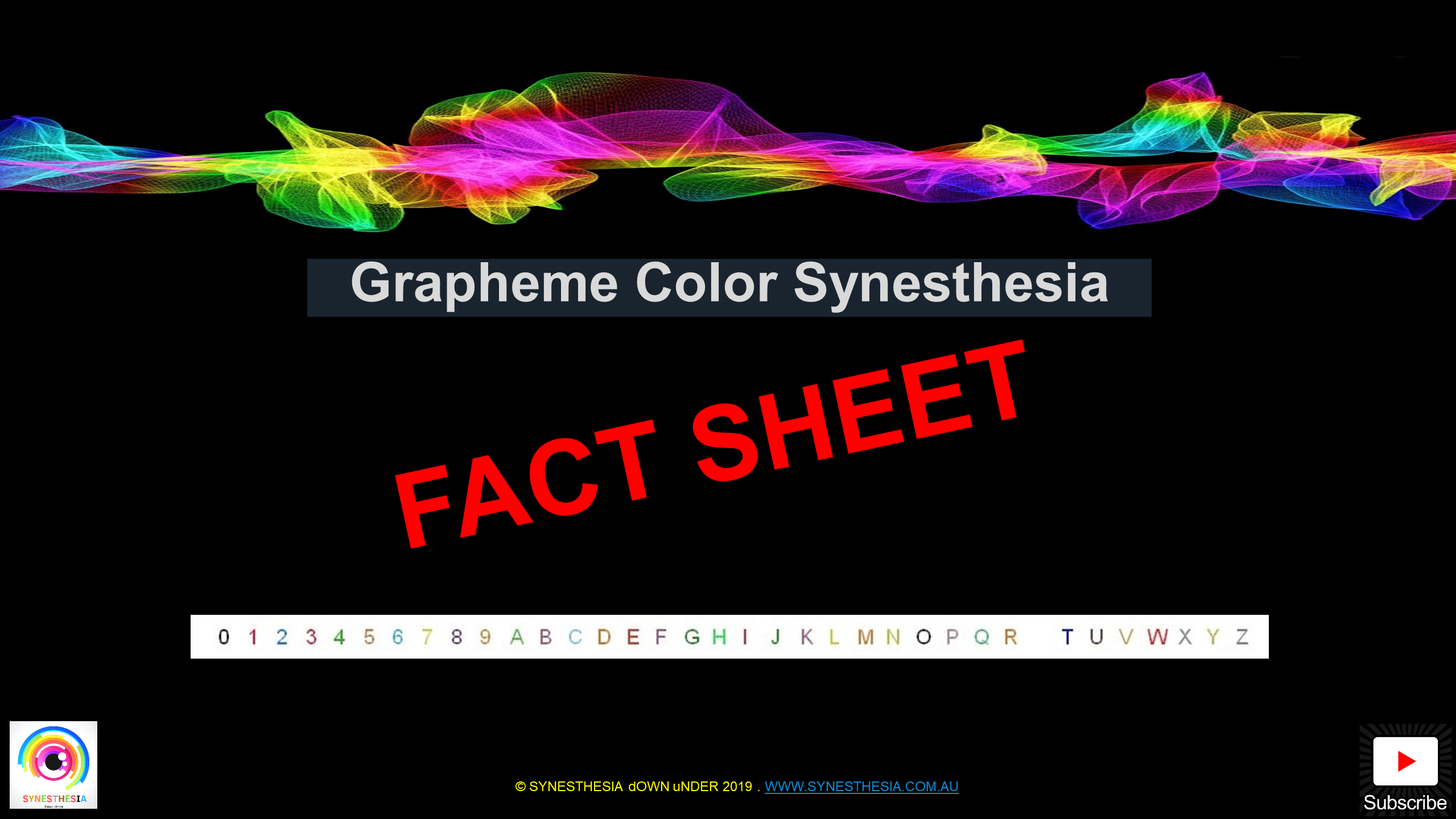Grapheme color synesthesia is the most common form of synesthesia.
In this type of synesthesia, the perception of letters or numbers generates a concurrent perception of color. For example, the letter A may be Red, B may be Blue, C green and so on. The color associations for each letter and number do tend to be unique to the individual (no two people have the same set of combinations (not even identical twins) but some letters and numbers are associated more commonly with specific colours. For example the letter O and the number 0 are often white or Black. The letter L and the number 1 often Black. As yet we do not know why.
Some researchers believe that because the grapheme-colour combination doesn't change when the letter is capitalized that the binding between the colour and the letter occurs later in the perceptual system and after the letter shape is recognized. Others believe that because synesthetes have major advantages in perceptual discrimination that the binding between colors and letters must occur earlier in the processing system.

Download the Grapheme Colour Synesthesia basic facts sheet.
Below is the color letter combination of a synesthete. Each letter was presented in random order three times. This test of consistency is seen by researchers as a good way to determine whether the subject taking the assessment is, in fact, a genuine synesthete.

Of course, some people say synesthesia is just overlearned associations and several researchers have looked for the source of these associations. in at least one case we know of the colours of a synesthete do match the colour letter set they owned as a child. This case was described by the researchers (Witthoft N1, Winawer J. 2006)
Nathan Witthoft, Jonathan Winawer, with David M. Eagleman, later showed that a significant proportion of the 6588 Synesthetes who took the Synesthesia Battery test had correspondences that were consistent with the fisher price fridge magnet set sold in the 70s. They argue quite reasonably that Synesthesia is a form of conditioned mental imagery. Further research is currently being done on this topic.

